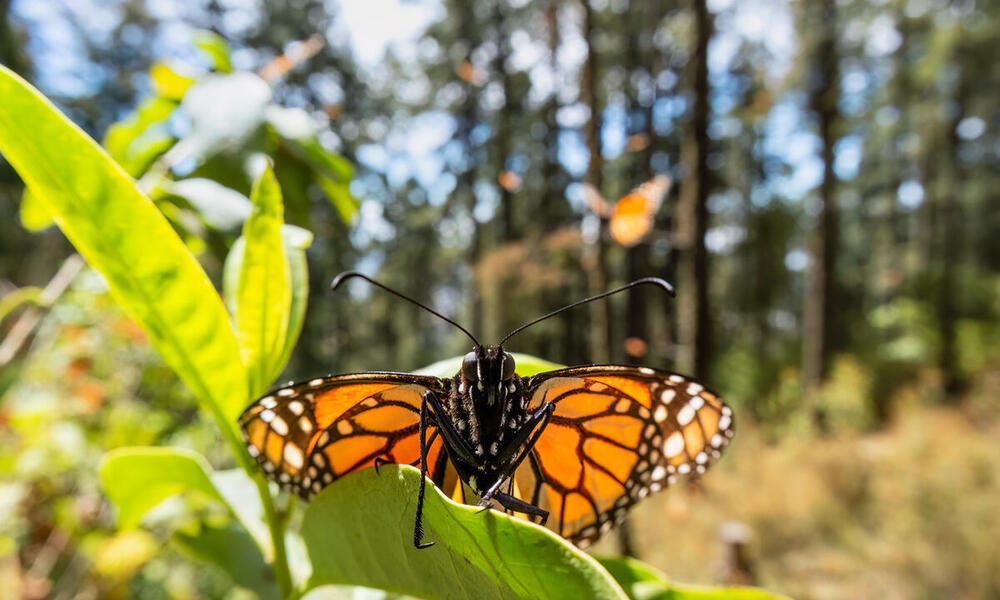New data detailing the abundance of the eastern monarch butterfly colonies wintering in central Mexico’s forests estimate that the species occupied only 2.2 acres during the 2023-2024 winter season—59% less than the previous year when scientists observed 5.5 acres. The annual survey is undertaken by WWF and its partners, including The National Commission of Protected Natural Areas in Mexico and the WWF-TELMEX Telcel Foundation Alliance, and is considered a benchmark for the overall abundance of the species. Experts measure the area of forest in which monarch butterflies hibernate each winter, providing a scientific indicator of their population status.
Scientists believe that climatic variations in the monarch’s breeding areas in Canada and the United States gave rise to high temperatures and drought, which reduced the abundance of milkweed, the only plant in which the butterflies lay their eggs. Land-use changes in the United States, combined with the widespread use of herbicides, also contributed to the loss of milkweed and other nectar plants essential to feeding adult monarchs.
“Fewer monarchs hibernating in their traditional forest habitat in Mexico greatly concerns all of us. It’s critical that all communities, governments, non-governmental organizations, scientists, and others continue to strengthen our conservation and protection efforts to support the monarch’s unique migration,” said Jorge Rickards, general director of WWF Mexico. “This is not the first time we’ve observed changes in the locations of the largest monarch colonies. It’s telling us that we need to intensify conservation and restoration measures not only in the Monarch Butterfly Biosphere Reserve, but also outside of it.”
This season’s largest colonies were detected outside the Monarch Butterfly Biosphere Reserve, with 0.84 acres in the Palomas sanctuary, and 0.5 acres in the Peña Ahumada sanctuary, both in the State of Mexico. In El Rosario, in the Sierra Campanario sanctuary, Michoacán, where the largest colony is traditionally located, the butterflies occupied an area of 0.46 acres. Data recorded in 2023-2024 represents the second-smallest area occupied by monarch butterfly colonies in Mexico since 1993, when population monitoring began, only preceded by the 1.7 acres observed in 2013-2014. The largest recorded population was in 1996-1997, with 45 acres monitored.
Monarch butterflies migrate from southern Canada and the northern and central United States to their overwintering sites in the mountain forests of Michoacán and the State of Mexico, where the Monarch Butterfly Biosphere Reserve is located, with some traveling nearly 3,000 miles.
Monarchs require a large and healthy forest mass to protect them from winds, rain, and low temperatures that are common at night in these forests. The health of the forests at the Monarch Butterfly Biosphere Reserve and throughout the monarch region also help support the regional communities, helping improve water quality in the Cutzamala System that provides for more than 6 million people in Mexico City and its metropolitan area. These forest ecosystems are rich in biodiversity—home to 132 species of birds, 56 species of mammals, 432 species of vascular plants, and 211 species of fungi.
Learn more about WWF’s work on monarch butterflies.
Help pollinators such as monarchs by planting native wildflowers.

